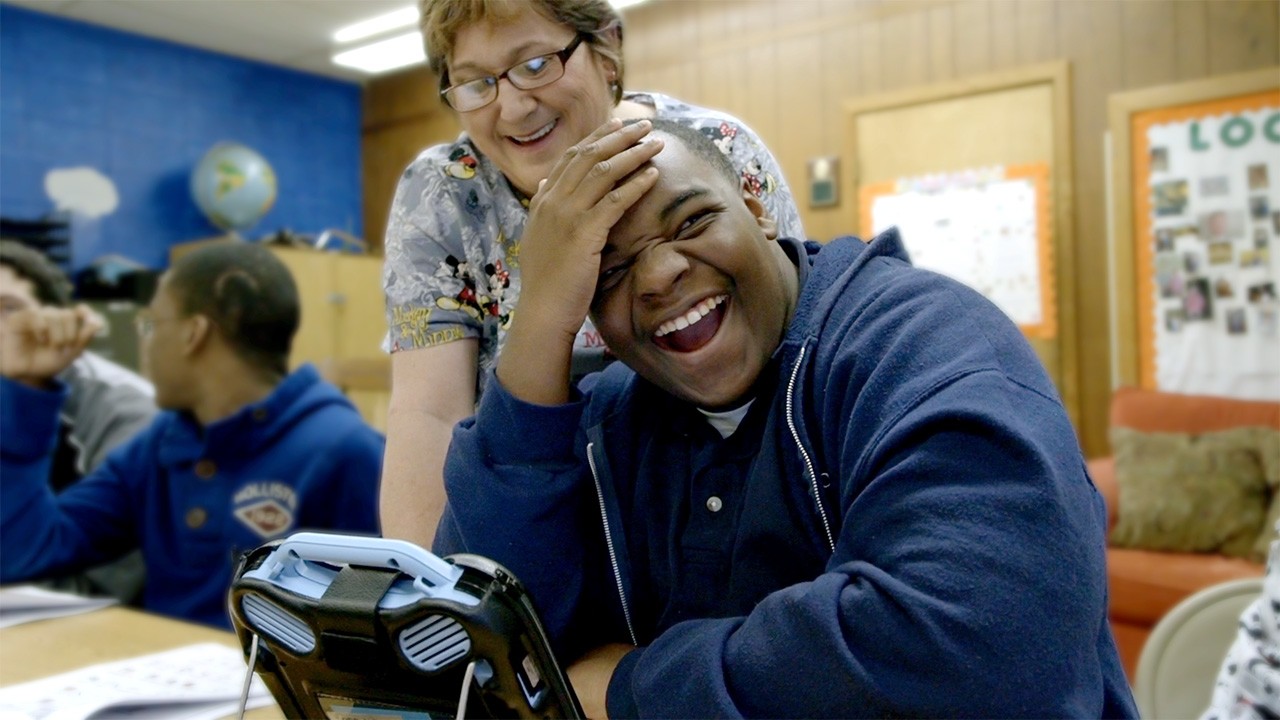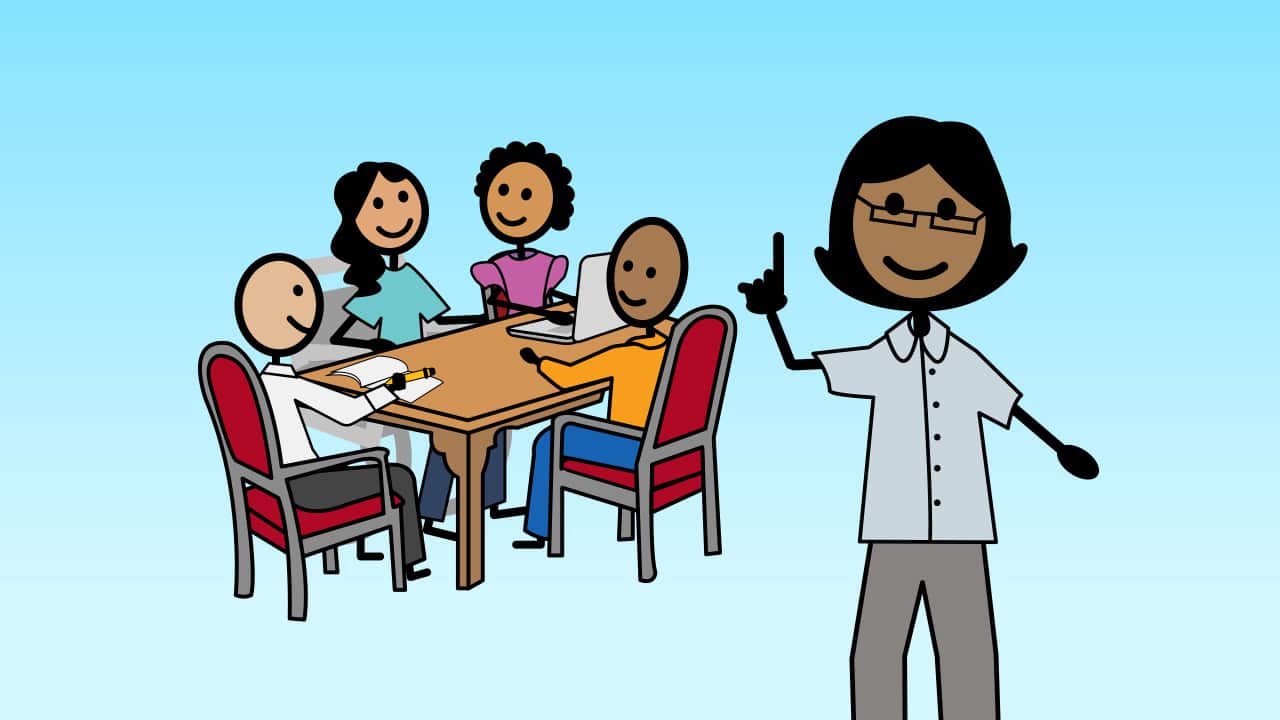- Specific
- Measurable
- Attainable
- Relevant
- Time-bound
By its very definition, an IEP is intended to present goals that are specific to an individual student’s needs. The real work begins with determining those unique needs and crafting an IEP in clear language that can be easily understood by all educators and caregivers who interact with them.
Determining the areas of need begins with the the Present Levels of Academic Achievement and Functional Performance (PLAAFP) developed by the entire IEP team. Areas of need must have a corresponding goal in the IEP. Because this foundational component is also informed by formal and informal assessments, it should identify the student’s specific needs and their strengths—both are critical to developing short-term objectives and annual goals.
n2y tip
When completed by an IEP team with fidelity, the K–12 Student Learning Profile in Unique Learning System’s Goals, Preferences, and Skills (GPS) provides a source to inform present levels of performance. Pair assessment results with Daily Scores and Observations, L3 Skills Play Report, and Positivity Core Behavior Profile Report to build a rock-solid PLAAFP.
What makes a goal specific?
Each goal should state specifically the targeted skill and what the child is expected to do in order to reach the agreed-upon level of mastery—which leads us to measurement.
n2y tip
Use Unique Learning System’s Daily Scores and Observations and Benchmarks, and Positivity’s Core Behavior Profile to identify standards-based academic and behavior skills that might be appropriate to specifically target.
How are goals measured?
In order to ensure that the student is making progress, each goal is associated with measurement criteria for demonstrating mastery. Many states require an indication of how the data will be collected for each one. Depending on the goal, the measurement might be a percentage of accuracy or frequency of successful attempts. As part of the criteria, the goal should detail the conditions under which the student is performing the work. For example, how many prompts do they require from the teacher? Is the student one-on-one with a teacher during the attempts or in a group setting?
n2y tip
Add academic-related goals to Unique Learning System’s Individual Skills Tracking area of the GPS and set the aim line to track progress. For behavior-related goals, use Positivity’s Core Behavior Profile and behavior tracking for interfering and prosocial behaviors.
What makes a goal attainable—and why is this important?
Goals should be developed with the intent of increasing independence so that a student continues on a path to chronological grade-level skills and standards. To ensure the student experiences incremental success and builds the confidence that is so important to learning, the team should carefully determine what the student can achieve.
n2y tip
In Unique Learning System, use Benchmark and Checkpoint results in conjunction with Daily Scores and Observations to set attainable goals. You can also use Positivity’s Core Behavior Profile when considering a goal. Evaluating these data points will help your team make an informed decision on goal attainability.
What is meant by a relevant goal?
Relevant means that the goal is individualized to the student, as well as meaningful to and realistic for the student’s success. If a student currently has a five-word expressive vocabulary, the goal should not be that they exchange conversation with complete sentences.
In other words, there is no copying and pasting of goals from one child’s IEP to another one! In the case of a student with a communication disorder, the question to guide relevancy might be, “How will improving their responsiveness to a teacher’s gesture or prompt improve their choice-making?”
n2y tip
Review Unique Learning System’s Daily Scores and Observations (as this will report daily performance and alignment to state standards), Benchmarks, Checkpoints, and L3 Skills Play Report and Positivity reports for additional data to inform team decisions.
What is a typical timeframe for a goal?
Specifying a time by which a student will accomplish a goal ensures accountability and gives a means to monitor progress at certain intervals. Most often, goals are written to be attainable within one year. Legally, IEP goals must be reviewed at least once per year by the IEP team. If goals need to be adjusted more than once per year, parents or the school can request an IEP team meeting in which this can be accomplished.
n2y tip
Use Unique Learning System’s Benchmarks and Checkpoints in the GPS as well as Daily Scores and Observations and L3 Skills Play Report and Positivity reports in My Account to monitor progress mastery in the determined timeframe. If it looks like progress is falling behind, use the resources at the bottom of Unique Learning System’s Individual Skills Tracking page to support and spark growth. In addition, you can use L3 Skills to provide skills-based practice as well as assign evidence-based strategies in Positivity.
Students may also benefit from having short-term objectives to meet their individual goals.
Where do objectives fit into IEP goals?
Objectives are smaller or interim goals that lead to achieving the overall IEP goal within a given timeframe. For example, if the goal is that a student will correctly solve double-digit addition problems with carrying, then a short-term objective may be that the student will visually represent regrouping by placing the digit in the tens column.
Under the 2004 Amendments to IDEA, the inclusion of short-term objectives is no longer mandated for students with disabilities assessed using general education standards. For those who are working on extended standards and taking the alternative assessments, IDEA states that objectives or benchmarks are required with each individual goal. Please note that some states require short-term objectives for each individual goal regardless of whether they are on general or extended standards. Reach out to your district for more information.
Putting it all together
One simple guideline for drafting an IEP goal that includes all the necessary components is to create a template:
When given [instruction or task, etc.], the student will [demonstrate skill or behavior, etc.] with ____% accuracy in ____ out of ____ trials [within a given time period].
Examples
When given word problems, (the student) will independently solve and explain problems involving fractions by partitioning a whole into equal parts with 90% accuracy in 4 out of 5 trials within a 9‑week period.
When given a reading passage, (the student) will use the context clues to determine the meaning of words with 80% accuracy in 3 out of 5 trials within a 9‑week period.
Goals should be individualized to meet the needs of each student and help them reach their greatest potential. L3 Skills and Positivity can provide valuable skill practice and behavior supports in your classroom. Remember to use Unique Learning System’s GPS and Student Daily Performance to help monitor student progress and for support in writing the most appropriate and effective goals for each of your students. By keeping SMART (Specific, Measurable, Attainable, Relevant, Time-bound) IEP practices in mind and following a template, you will have well-written goals that form the roadmap to student success!



